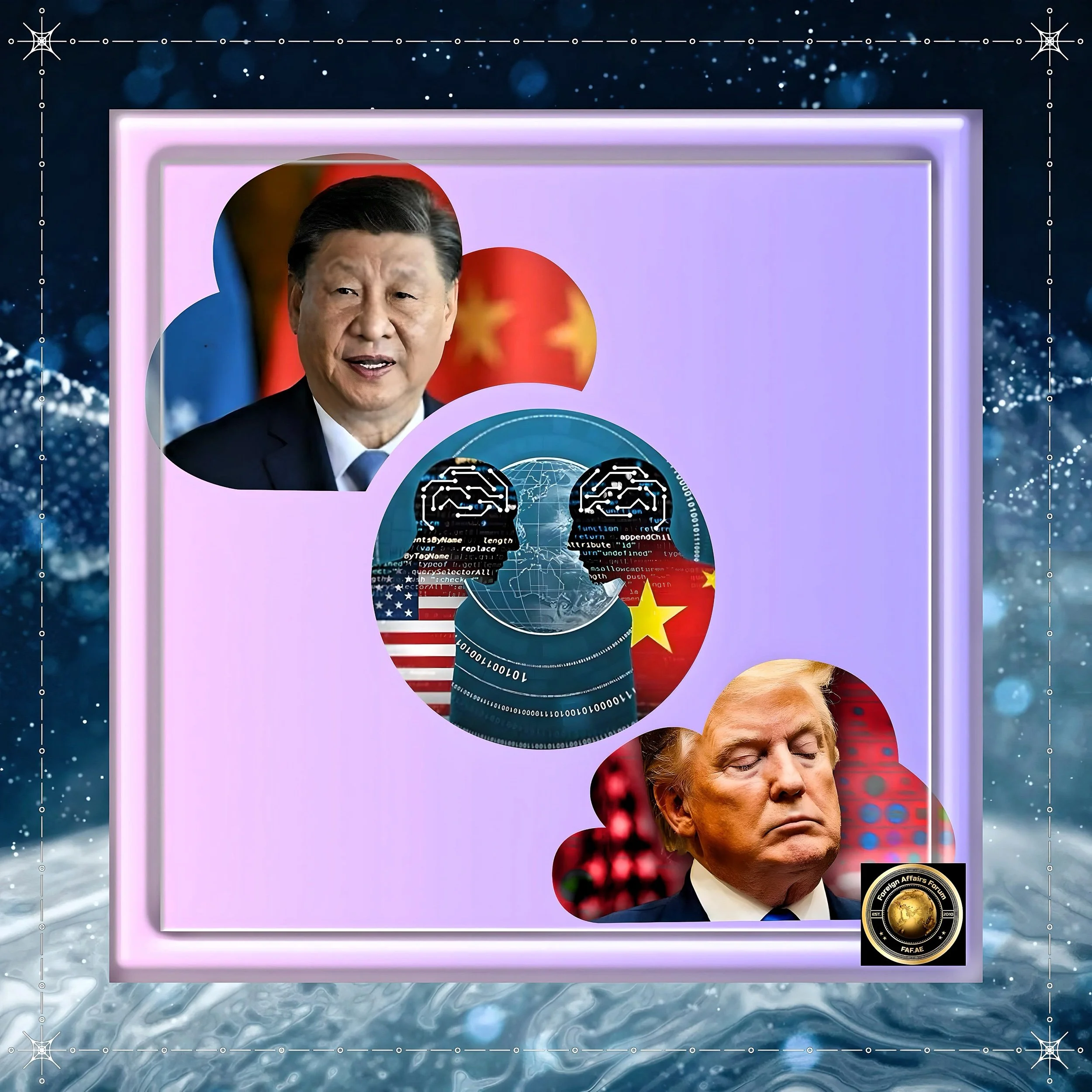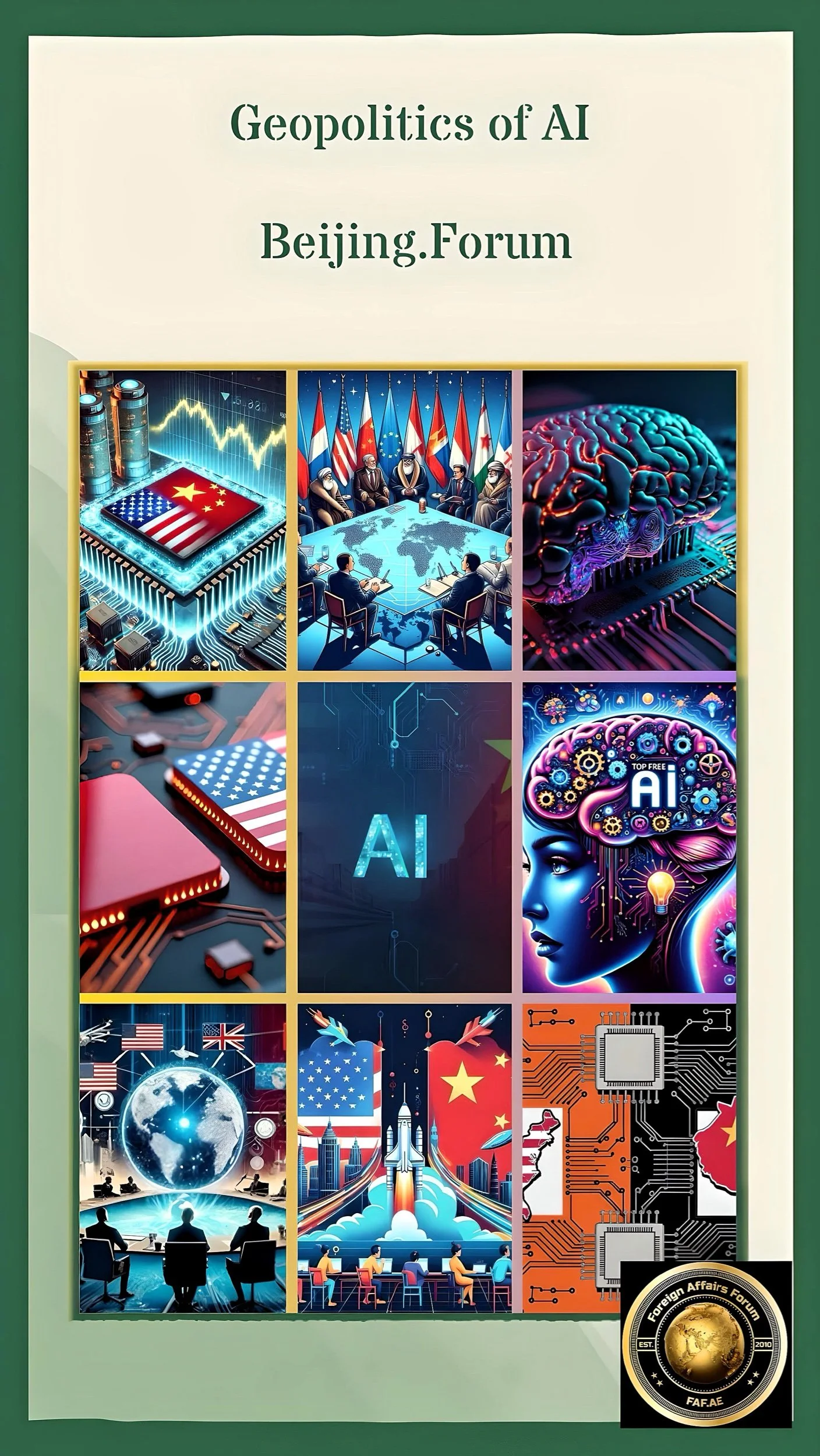Key Technological Areas Where the U.S. is Lagging Behind China
Introduction
The technological rivalry between the United States and China represents one of our time's most consequential geopolitical dynamics.
While the U.S. maintains leadership in several critical domains, evidence suggests China has gained significant advantages in specific technological areas.
Based on recent data and expert assessments, FAF's comprehensive analysis examines where the U.S. currently trails China in the ongoing tech competition.
Computing Market Growth and Infrastructure
China’s computing sector is poised to outpace American growth in the coming years dramatically. According to market insights from Stocklytics, China’s computing sector is projected to surge by 42% and reach nearly $30 billion by 2029, overtaking the U.S. market’s expected $22.5 billion.
This momentum represents an eight-fold faster growth rate compared to the United States.
By 2025, China is expected to surpass the U.S. in computing revenue for the first time, marking the beginning of a sustained period of dominance.
The revenue gap is projected to widen tenfold by 2026, with China leading by $3.2 billion. By the end of the decade, China’s market share in the global computing industry will climb to 25%, while the U.S.’s share will slip from 20% to 18%.
China has made remarkable progress in building computing infrastructure essential for next-generation technologies.
As of mid-2024, approximately 250 advanced data centers and other computing facilities were being completed or under construction across mainland China.
The China Academy of Information and Communications Technology estimated that the nation’s total computing power in 2023 reached 230 eflops, which still placed the country behind the U.S.
In 2024, China's total general computing power amounted to over 71 EFLOPS (based on FP64). Additionally, their intelligent computing power, based on half-precision (FP16) accelerators, reached 725.3 EFLOPS. The official Top 100 list of supercomputers in China aggregated to 1.406 ExaFLOPS.
America Leads per 2024 November report
The U.S. has the most systems in the TOP500 out of any country, with 172. It also has the highest combined value of maximum achievable performance, at 6.5M TFlops (Teraflops).
Adding to its dominance, the U.S. also has a new computing champion. El Capitan, a cutting-edge supercomputer, has recently dethroned Frontier to claim the title of the world's fastest.
However, analysts from Omdia note that “China has been making stunning strides in building intelligent computing centers” and predict that “as long as China keeps with the current pace, the country’s computing infrastructure gap with the US will narrow further.” However due to US tariffs China’s pace may slow down considerably.
Quantum Technology Leadership
Quantum Communication
China has established clear leadership in quantum communication technologies, outpacing the United States in research quality and quantity.
China’s approach to quantum technology development has focused on transforming proven concepts into practical applications, resulting in significant achievements like the 1,200-mile Beijing-Shanghai Quantum Key Distribution (QKD) network and the groundbreaking Micius satellite.
The Information Technology & Innovation Foundation (ITIF) report confirms that China leads in quantum communication, where the technology is ready for practical implementation. China’s dominance in this area is further evidenced by its substantial lead in domestic quantum communication patents.
Quantum Sensing
In quantum sensing, China has achieved parity with the United States in research quality while producing more research. China also maintains “a considerable lead in quantum sensing patents” compared to the U.S., indicating a stronger position in intellectual property protection for this emerging technology.
Research Output and Public Funding
China broadly leads the United States in total research output across quantum technologies, though with varying quality depending on the specific field.
While the U.S. demonstrates stronger research quality in quantum computing, China’s sheer volume of research across quantum disciplines reflects its commitment to technological advancement.
In terms of funding, China claims over $15 billion in public financing for quantum R&D, which offsets a U.S. advantage in private funding. This substantial government investment highlights China’s strategic prioritization of quantum technology development as a national imperative.
Nuclear Fusion
China is rapidly advancing in nuclear fusion and has made significant strides, potentially surpassing the U.S. in certain areas.
China’s EAST reactor set a world record by maintaining stable fusion plasma for over 17 minutes, demonstrating its ability to sustain extreme conditions necessary for fusion.
Additionally, China is developing the world’s first fusion-fission hybrid reactor, the Xinghuo, which aims to generate electricity by 2030.
While the U.S. has historically led in fusion research, China’s aggressive investments and strategic planning have allowed it to catch up and potentially take the lead in some aspects of nuclear fusion technology
Artificial Intelligence Implementation
While the debate about AI leadership is complex, some evidence suggests growing Chinese advantages in certain aspects.
According to a report by the data analytics firm Govini, the U.S. is “quickly falling behind China in the development of artificial intelligence.”
The report criticizes the U.S. Department of Defense for treating AI primarily as a research and development effort rather than implementing practical applications.
“Even though artificial intelligence is an incredibly, highly visible, arguably the most transformational technology that matters in the critical tech competition, not just for the United States, but around the world, the Department of Defense is still primarily attacking this as a research and development effort,” noted Govini CEO Tara Murphy Dougherty.
Product Development from Proven Concepts
China excels at transforming established technological concepts into commercial products and services.
ITIF Senior Policy Manager Hodan Omaar says, “China leads at transforming proven quantum ideas into advanced products and services, but it doesn’t lead in generating the most groundbreaking new concepts.”
This efficiency in converting theoretical concepts to practical applications represents a significant competitive advantage in rapidly evolving technological fields.
Contextual Perspective on the Technology Gap
It’s important to note that the U.S.-China technology competition is multifaceted, with each country maintaining advantages in different domains.
The U.S. still leads in quantum computing hardware and practical systems, semiconductor development, and generating groundbreaking technological concepts.
Additionally, Alibaba chairman Joe Tsai has stated that Chinese firms lag behind U.S. peers in AI development “by two years,” particularly due to U.S. chip export restrictions limiting access to advanced semiconductors like Nvidia’s GPUs.
Conclusion
The technological rivalry between the United States and China creates a bifurcating rather than decoupling technological landscape.
China has established clear advantages in computing market growth, quantum communication, quantum sensing patents, research output volume, and transforming proven concepts into products.
These areas represent significant challenges to continued U.S. technological dominance.
Both nations implement strategies to maintain or gain advantages as this competition intensifies.
The U.S. focuses on export controls and domestic semiconductor manufacturing through initiatives like the CHIPS Act, while China is pursuing technological self-sufficiency and building domestic capabilities despite international restrictions.
For decades, this technological bifurcation will continue shaping global technology development, economic relationships, and geopolitical dynamics.






